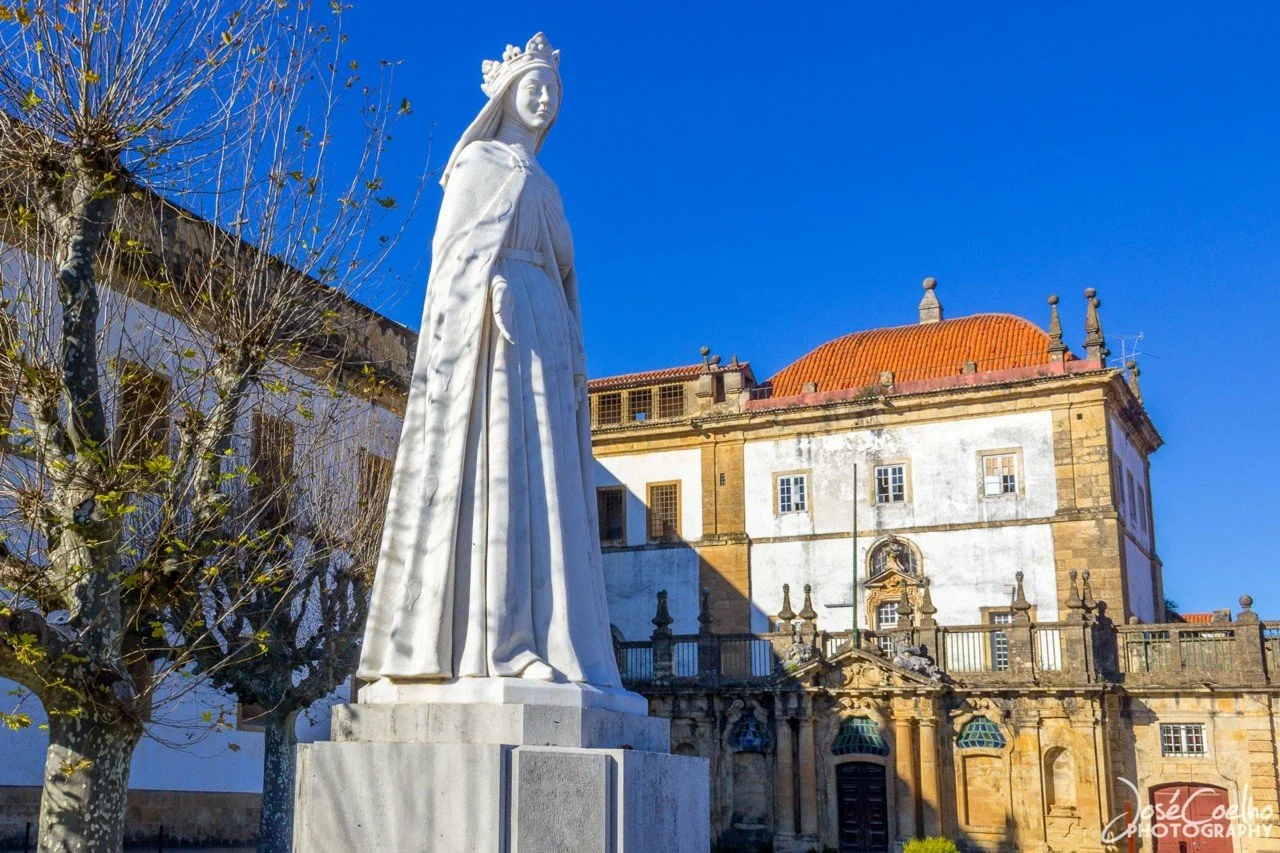The Enchanted Coimbra
The Enchanted Coimbra
Coimbra, from the Celtic Conimbriga, the ancient capital of the kingdom of Portugal, is a Portuguese city located in the central part of the country, on the right bank of the River Mondego.
Famous for its fierce academic life and for having the oldest university in the country and one of the oldest in Europe, the “city of students” is, however, more than that. The subject of several timeless and extremely important literary works in Portuguese literature, Coimbra is a secular but dynamic city that makes those who visit it nostalgic.
But if you're reading this article on the Friends of Portugal blog, it's likely that you already know all this information and have even visited this beautiful city.
Today, however, my focus isn't on the rich history of this land or the reason why you might consider studying at the University of Coimbra one day (a topic for another day!), but rather to tell you one of the most important stories in the Portuguese imaginary: the story of D. Pedro and D. Inês de Castro.
Where History and Legend Intertwine
Among the many legends surrounding the mystical city of Coimbra, none is as well known or as remarkable as the tragic story of D. Pedro I and D. Inês de Castro.
To begin telling this story, first I need to give you some background on the main characters in this calamitous romance that took place in the 14th century.
D. Inês de Castro was a noblewoman from Galicia, a region located in the northwest of the Iberian Peninsula, today part of Spain. Born in 1320, Inês was the daughter of Pedro Fernandes de Castro, one of the King of Castile's most important men. As a result of her family's ambitions, Inês arrived in Portugal to become the maid of D. Constança Manuel, the fiancée of D. Pedro I, the royal infante of Portugal.
Pedro I, son of Afonso IV, King of Portugal, married Constança in 1339 through a marriage of convenience, which in itself was an excellent way to start married life.
The romance between Pedro and Inês began very soon after the noble lady's arrival in Portugal and Constança soon noticed it. Out of curiosity, Constança made Inês de Castro godmother to one of her sons, because at the time godmothers were considered family and, as such, a relationship between Pedro and Inês would be highly frowned upon and, strictly speaking, even incestuous.
Needless to say, this did not deter Pedro from living this romance and, when his father, the king, found out, Inês was sent into exile to the Albuquerque Castle.
As a result of her misfortune, Constança died in 1345, at the time of the birth of her fifth and last child. After that, Pedro sent Inês de Castro back from exile and moved with her to Coimbra, which caused quite a stir at the court.
In Coimbra, the couple finally assumed their relationship, living in the palace next to the Convent of Santa Clara, near what is now Quinta das Lágrimas, and the scandal swept the country from north to south, starting a major disagreement between D. Pedro and D. Afonso, his father.
While they lived together, the couple had four children (considered illegitimate, since Pedro even asked for the Pope's blessing to marry his beloved, a request he was denied), which brought the Galicia nobles closer to the Portuguese throne, something that Afonso IV feared.
So, under the influence of the nobility, Afonso ordered the death of Inês de Castro and, in January 1355, taking advantage of Pedro's absence, three executioners entered the Palace of Santa Clara and beheaded Inês de Castro.
D. Pedro, horrified by the news of the loss of his beloved, declared war on his father, who died just two years later and Pedro I was crowned King of Portugal.
In June 1360, the King announced that he had married Inês de Castro in secret, thus legitimizing their children, making Inês the first and only posthumous queen of Portugal.
Pedro later had two tombs built in the Alcobaça monastery, one for himself and one for Inês, so that they would be together forever.
Before his death, Pedro I avenged the death of his beloved by having two of the executioners killed in an absolutely brutal way.
Because of the family intrigues and vendettas and forbidden loves, the story of Pedro and Inês is often compared to Romeo and Juliet, but this romance is very real and ended up influencing the history of Portugal. Of course, since it's such an old story, it's difficult to distinguish precisely what is legend and what actually happened, although there are documents dating from the time that prove most of the facts.
The Roadmap of the Tragic Romance: Places to Visit in Coimbra
For those touched by this story and wanting to follow in the couple's footsteps, there are a few places you can't leave out of your itinerary:
Monastery of Santa Clara-a-Velha
On the banks of the River Mondego, this Gothic monastery was the scene of tragic events, as it is the place where Inês de Castro is believed to have been murdered. The gardens around the monastery evoke the dramatic scene of her death and are today a space of reflection and natural beauty. Although the monastery was abandoned due to the constant flooding of the river, the ruins remain, bearing witness to centuries of history.
Quinta das Lágrimas
According to tradition, it was here that Pedro and Inês strolled in love when they moved to Coimbra. Legend has it that the tears Inês shed before her death created the Fountain of Tears at Quinta das Lágrimas, and that the rare reddish algae that grow there are her spilled blood. Today, Quinta das Lágrimas is a beautiful garden, open to the public, where the marks of the legend are present in every corner. The palace and gardens keep alive the memory of the romance between Pedro and Inês and are a must for history lovers.
Alcobaça Monastery
About an hour and a half from Coimbra, this monastery houses the tombs of Pedro and Inês. The stone tombs, decorated with intricate reliefs,a true work of Gothic art, are facing each other so that, according to popular belief, they can continue to look each other in the eye in eternity. Well worth a visit for those wishing to close the circle of this romantic story.
Films and series about the legendary romance
The story of Pedro and Inês de Castro has inspired several adaptations over the centuries, from plays to films and television series.
Inês de Castro (1944)
This Portuguese film, directed by José Leitão de Barros, is one of the first major film adaptations of the legend. It tells the story of the love between Pedro and Inês, with all its tragedy and revenge.
Pedro and Inês (2018)
In a more recent adaptation, this film by António Ferreira mixes past and present, portraying the romance of Pedro and Inês in a contemporary setting. The work highlights the timeless nature of this story of love and death (you can watch the film on the RTP website: https://www.rtp.pt/play/p7347/e549150/pedro-e-ines).
Inês de Portugal” series (2001)
This RTP miniseries presents a more classic recreation of the life of Inês de Castro, focusing on the court drama and political complexities surrounding the romance (you can watch the series on the RTP website: https://arquivos.rtp.pt/programas/ines-de-portugal/)
Coimbra: The City of Culture and Mystery
Coimbra carries with it a unique charm, where tradition and the supernatural meet. It is a place of historical and cultural depth, where the present meets the memories of a past full of passion and mystery. To walk through its medieval streets is to immerse yourself in a setting where the past seems to lurk around every corner. Strolling through the city, we are transported to a place where love and death meet, marking the fate of these two figures who still inhabit the Portuguese imaginary.
For anyone looking to get to know the soul of Portugal in depth, Coimbra is an unmissable destination. More than just a city, it is a meeting place between reality and fiction, where every stone tells a story and every legend revives the magic of an enchanted past.
For more fascinating topics and stories about the country that is so small in size but so big in history, keep following the Friends of Portugal blog!




